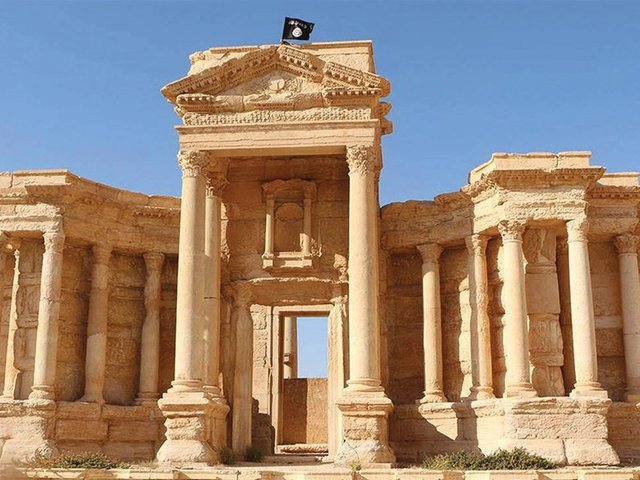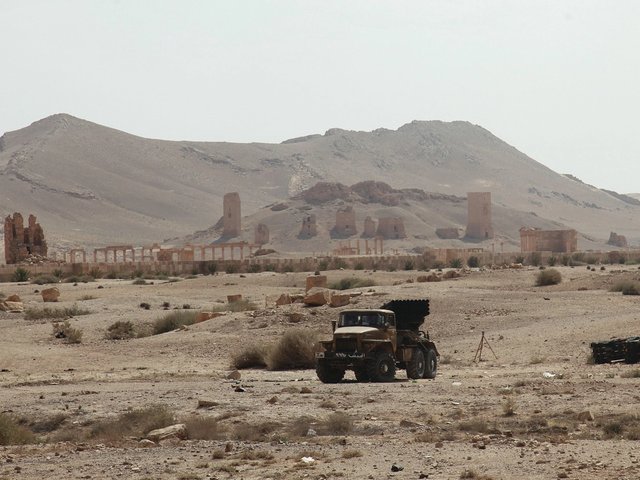Islamic State (IS) militia are now on the outskirts of Palmyra, the most important archaeological site in Syria. The extremists are believed to be less than two kilometres from the Roman remains, attacking from the desert. This is causing great concern, since IS extremists in neighbouring Iraq recently used heavy equipment and explosives to destroy antiquities at the Mosul Museum and the sites of Nineveh, Hatra and Nimrud.
Maamoun Abdulkarim, head of the Syrian government antiquities service, says that the world “must mobilise before, not after, the destruction of the artefacts”. However, the international community is in a difficult situation. There is very little sympathy for the regime of Syrian president Bashar Al-Assad, but even less support for the IS militia. Outsiders can now do little to prevent the IS advance.
Palmyra lies in the desert 250 kilometres north-east of Damascus. During the first and second centuries AD it developed as an important Roman city with strong Persian ties and trading links with China and India. Its paved colonnaded street, just over one kilometre long, linked the Temple of Ba’al with Diocletian’s Camp. These ruins still survive, along with other important remains, including the agora (central assembly square) and theatre. The modern town of Tadmur abuts the site to the north east. Until the recent civil war Tadmur’s economy was dependent on tourism, since Palmyra is Syria’s main attraction outside Damascus and Aleppo.
Palmyra’s greatest artworks are sculpted limestone busts on funerary monuments. Although many have gone to international museums, others remain in tombs and in the local museum, which opened in 1961. It is unclear whether the underground tombs have been securely sealed and the museum objects removed to a secure store.
Palmyra was made a Unesco World Heritage Site in 1980. Rebels temporarily occupied Palmyra in 2013, causing some damage to archaeology. Assad’s government forces recaptured the area later that year.
On 14 May a Unesco statement reported that “according to several sources, armed extremist groups raided the city of Tadmur, home to the archaeological site of Palmyra, one of the most important cultural sites in the Middle East”. Unesco’s director general Irina Bokova is calling for the “immediate cessation of fighting” around Palmyra.




